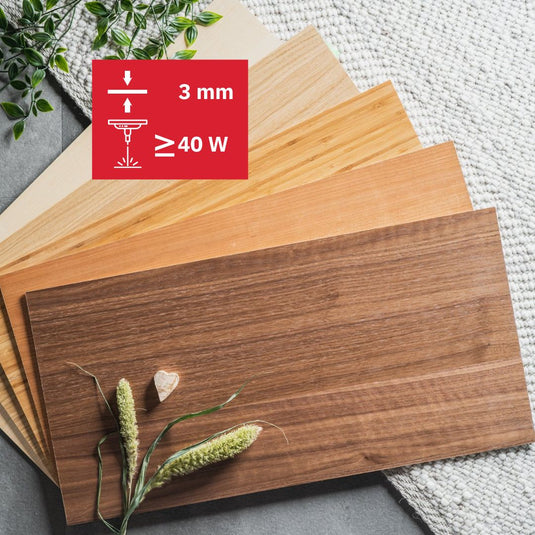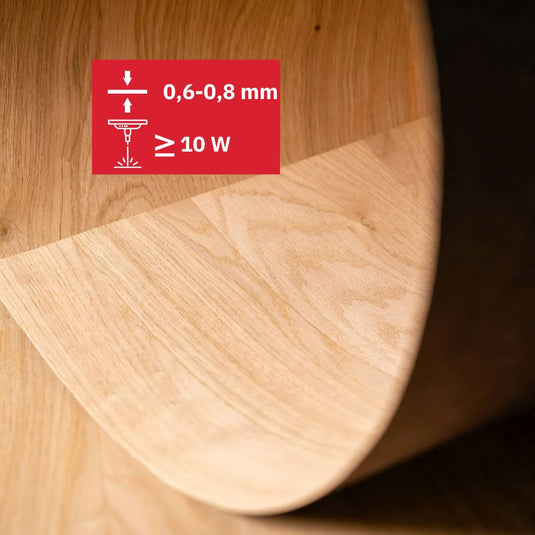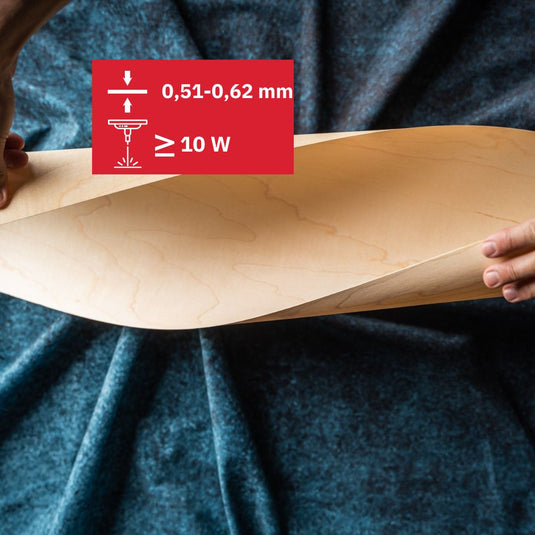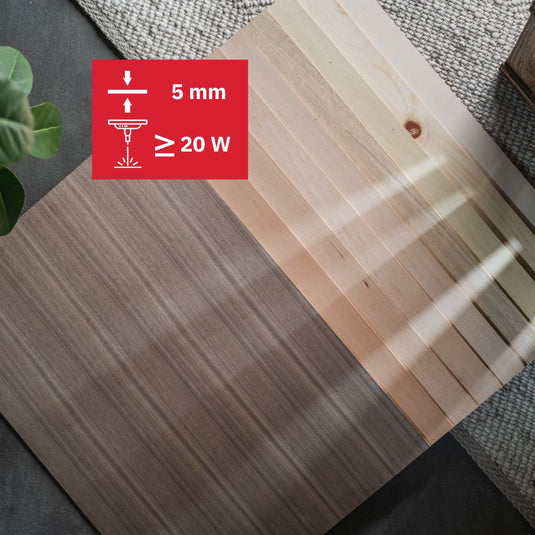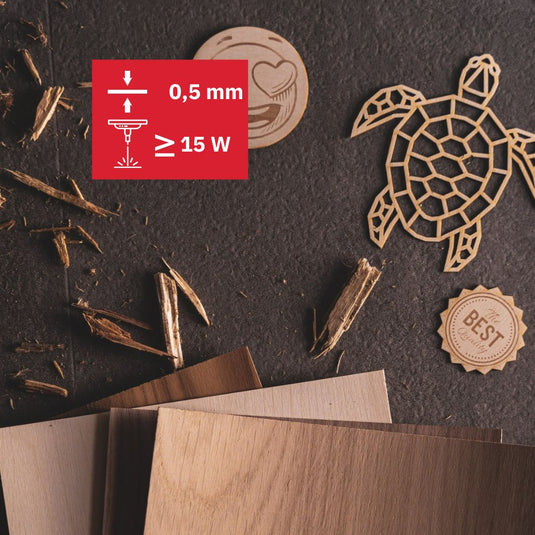Laser cutting wood: What it is and how it works
Laser processing of wood is a technique that is becoming increasingly popular as it offers a variety of possibilities for designing and manufacturing products. When laser cutting or engraving wood, a focused laser beam is used to cut or mark the engraving material precisely and cleanly. Here are some important facts you should know about laser cutting wood.
Types of wood suitable for laser cutting
Most types of wood can be processed with a laser, but some are better suited than others. Hardwoods like Sycamore, Birch, Oak, and walnut are generally easier to work with than softer woods like pine or spruce. The harder the wood, the more precise and cleaner the cuts you can achieve with a laser.

Advantages of laser cutting wood
Laser cutting wood offers a number of advantages compared to traditional processing methods such as sawing or milling. Some of the advantages include:
- Precision: The laser beam cuts the material precisely and cleanly, without fraying or chipping.
- Speed: The laser can cut or engrave the wood in a few seconds, saving time and speeding up production.
- Repeatability: Laser processing allows you to quickly and accurately cut multiple identical parts, which is important when producing large quantities.
- Flexibility: With a laser, you can create complex shapes and patterns that are difficult to achieve with conventional methods.
Applications of laser cutting wood
Laser cutting wood is used in a variety of applications, including:
- Furniture: Wood pieces such as chairs, tables, cabinets, and shelves can be cut and shaped with a laser.
- Jewelry: Jewelry pieces such as earrings, necklaces, and bracelets can be made from laser-cut wood.
- Artwork: Wood can be used as a medium for artistic works that can be cut and engraved with a laser.
- Packaging: Wood can be cut and shaped with a laser to create packaging for products.

Tips for laser cutting wood
Here are some tips to help you get the most out of laser cutting wood:
- Use high-quality wood: Use high-quality wood to ensure that the cuts are precise and clean.
- Adjust the laser settings: Experiment with the laser settings to achieve the best cut quality.
- Consider the thickness of the wood: The thicker the wood, the slower the laser should work to achieve a clean result.
- Clean the wood before cutting: Dust and dirt on the wood surface can affect the quality of the cut. Therefore, clean the wood thoroughly before cutting.
- Use a protective film: A protective film on the wood surface can help keep the material clean during cutting or engraving.
- Adjust the file preparation: Use vector graphics and make sure all lines in the file are closed to achieve a precise and clean cut edge.

Conclusion
Laser cutting wood offers many advantages and opens up new possibilities for designing and manufacturing products. With the right settings and techniques, you can achieve high-quality and precise cuts that enhance and improve your products. If you want to work with wood and experiment with a laser, you should follow these tips and ensure that you use high-quality wood and appropriate settings. With some practice and experience, you can make laser cutting wood an important part of your creative process.


